Triangle Pavilion
This is a continuation of the form that was created in phase 1. After creating a museum board study model now, I was on to scaling up the design and figuring out what I would do with this. With the move to dimensional material, I knew that if I wanted to think of a human scale the weight would play a role in the design. The idea of using fabric and metal to create a rigid and flexible skin structure was something that I played with but did not work as intended. I went back to this and created bas wood frames and stretched the fabric over like a canvas. This gave the triangles rigidity, flexibility and an idea of lightness. I was able to attach all the triangle pieces together with a wire that could be bent in to shape and move around. This was the base idea to move forward and the starting point of the design.
With this base model I stepped back looking at the module to figure out what could change in the structure and created a Y variation. The first iteration worked and needed improvement as the connection points weren’t quite right. The second version of the Y had great connection details but there was too much flexibility and I decided not to do another version and go back to the triangle. The next version I doubled the size and looked at having multiple triangles attached together by the fabric and not by a mechanical device like wire. This worked well and now the fabric was acting as a hinge and this was the design that I wanted to make as my final model, doubling the design again.
Final iteration: Now that I had an idea of what I was going to make at a larger size with a closer idea to the human scale idea. I had to figure out material sizing and attaching methods at this scale. With all the previous models made by hand and eyeballing the final needed more precision and accuracy to build the final version. I created an accurate rhino model to get an estimate of how much wood and fabric I would need to buy as well as creating rendered views of the model. With this digital model I made a jig to build all my wooden frames and then attach the canvas to them having four modules with three triangle sections each. Then each module was tied together with metal wire.
This project was a process project and working on a geometric drawing and creating a model/ structure out of the process with a final drawing as the result.

Triangle Frame Full System

Flexibility of Connection

Overall Shape Idea
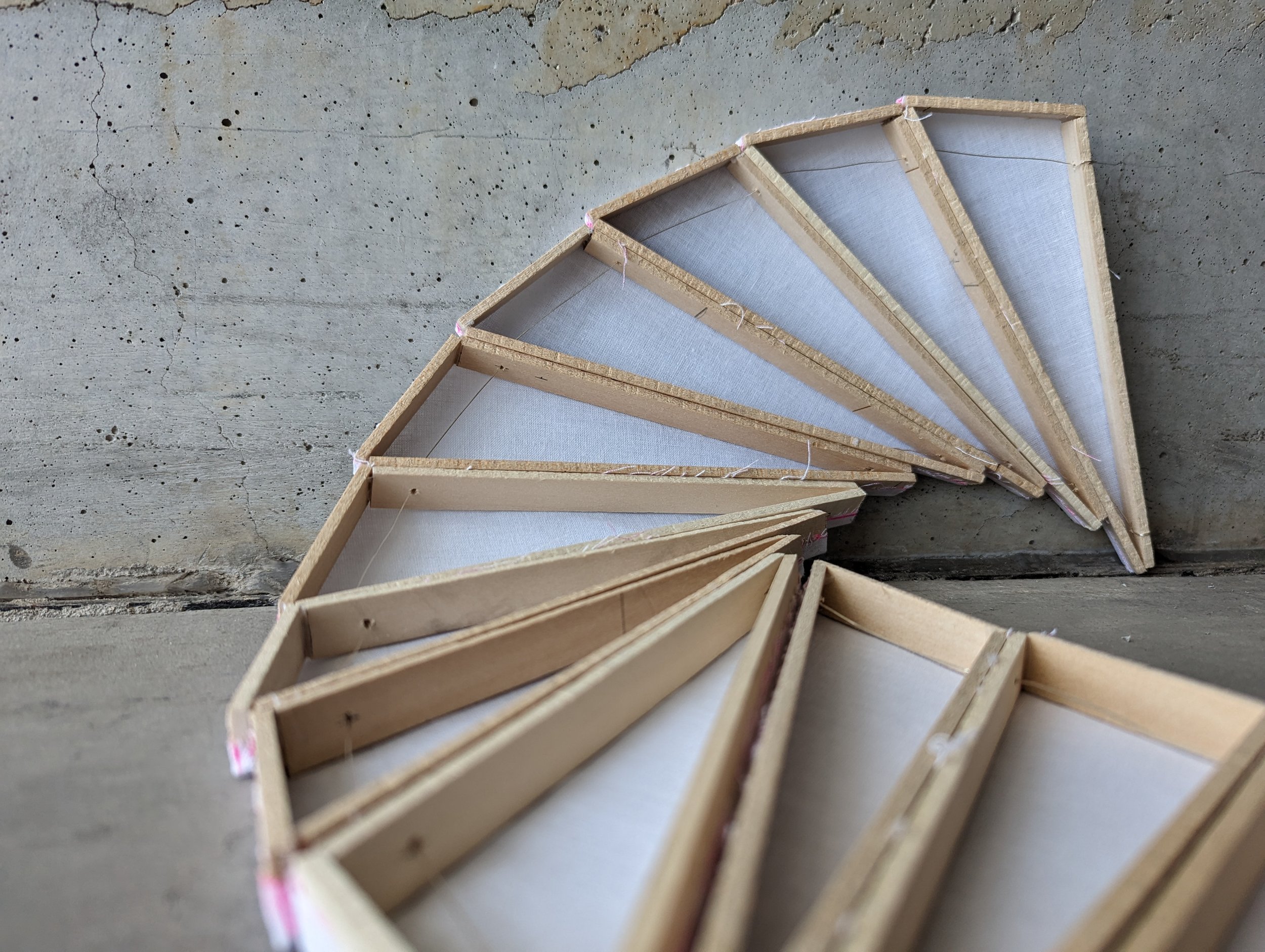
Connection Detail

Y Frame Version 1

Y Frame Interior

Y Frame Version 2

Y Frame Version 2 Standing

Triangle Frame Version 2

Triangle Frame Version 2

Frame Jig For Final Model


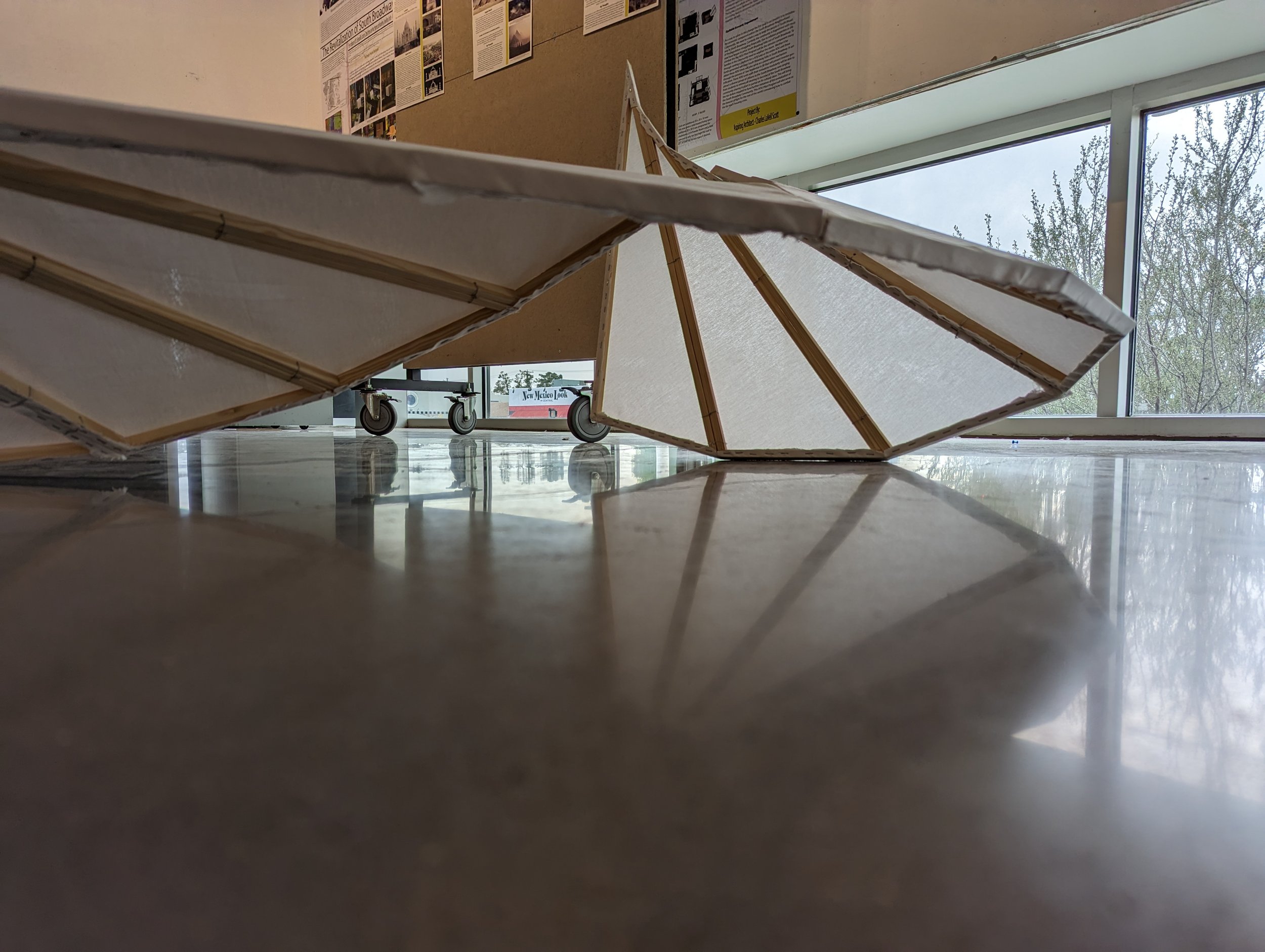
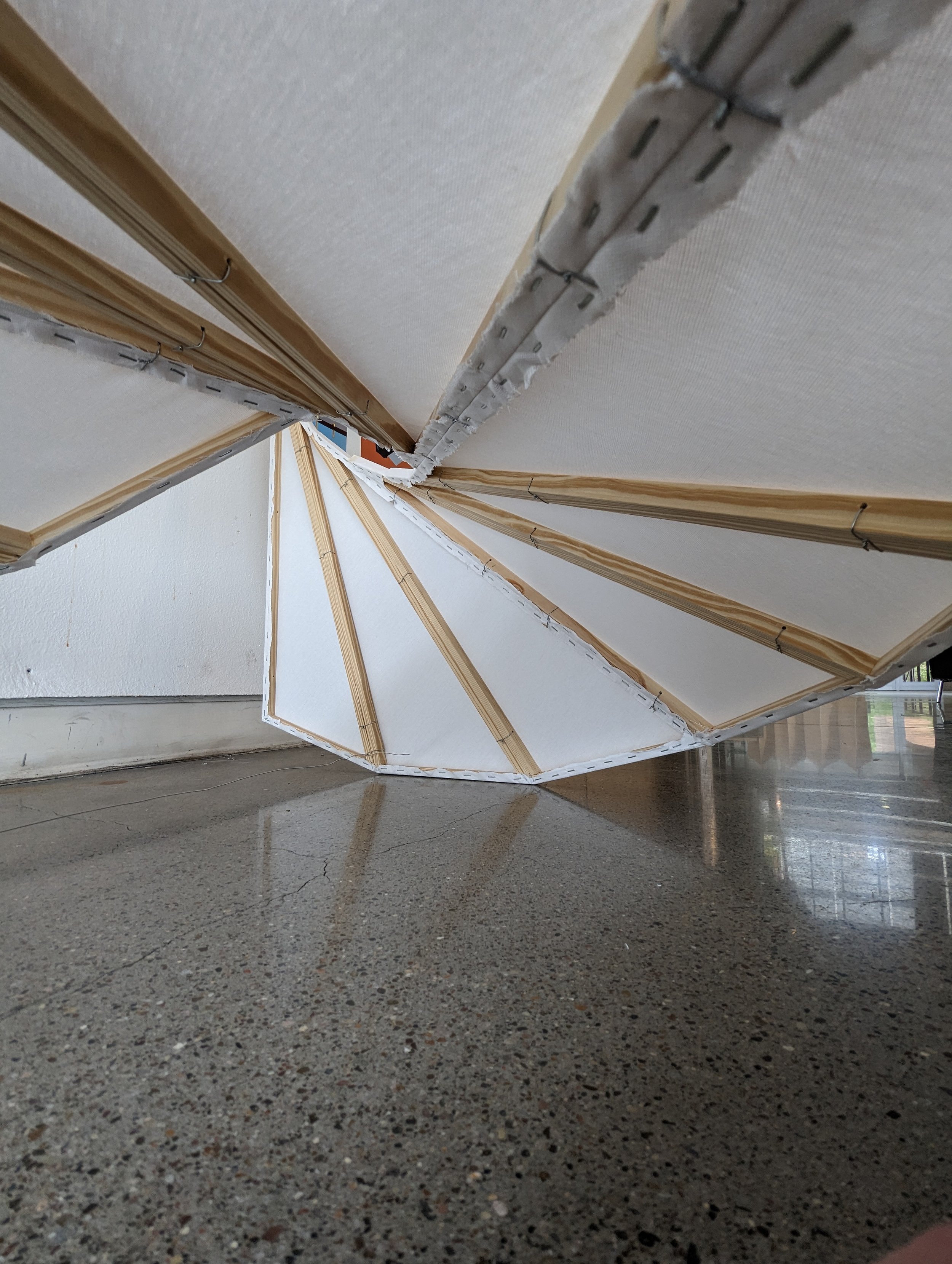
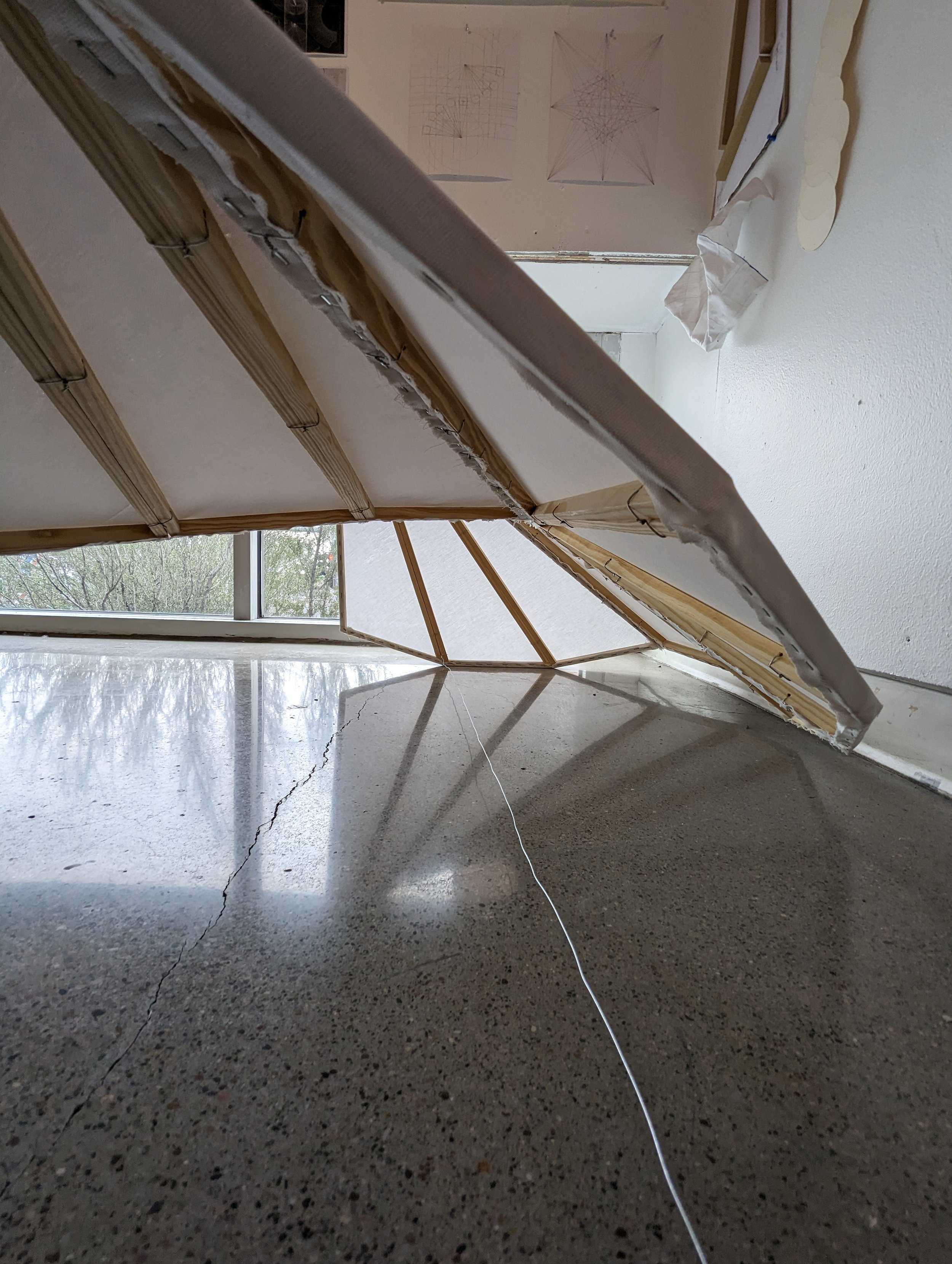
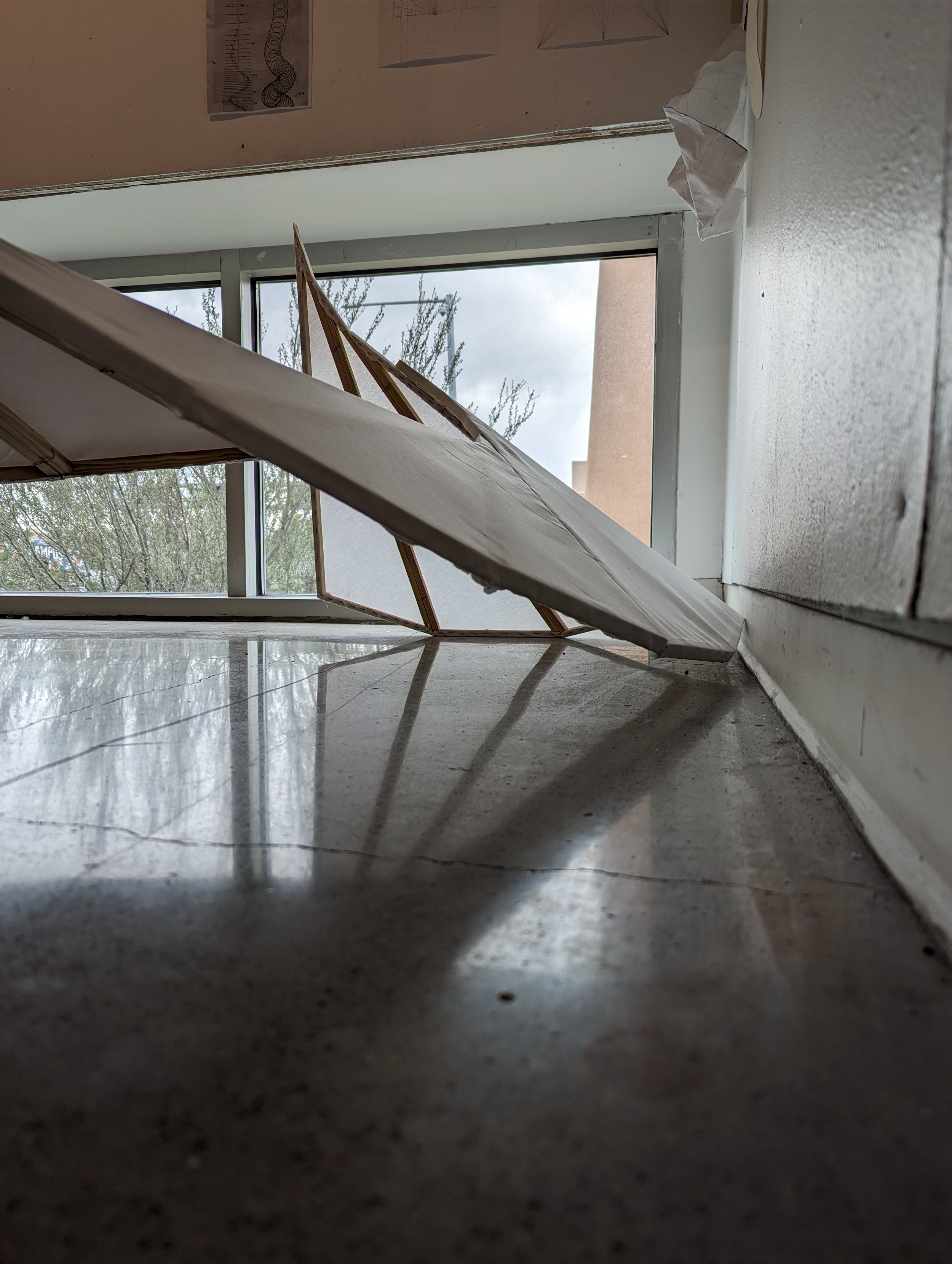


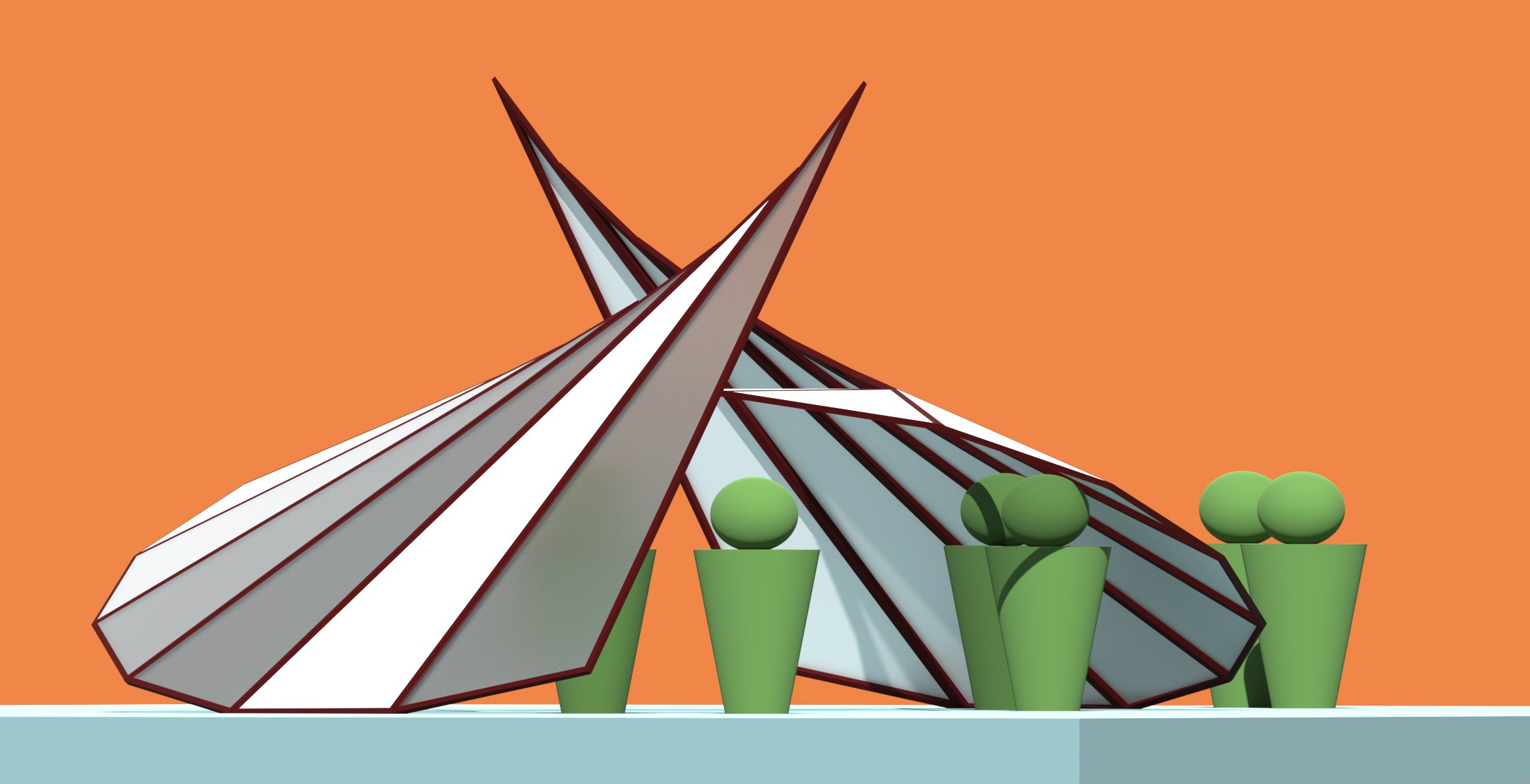
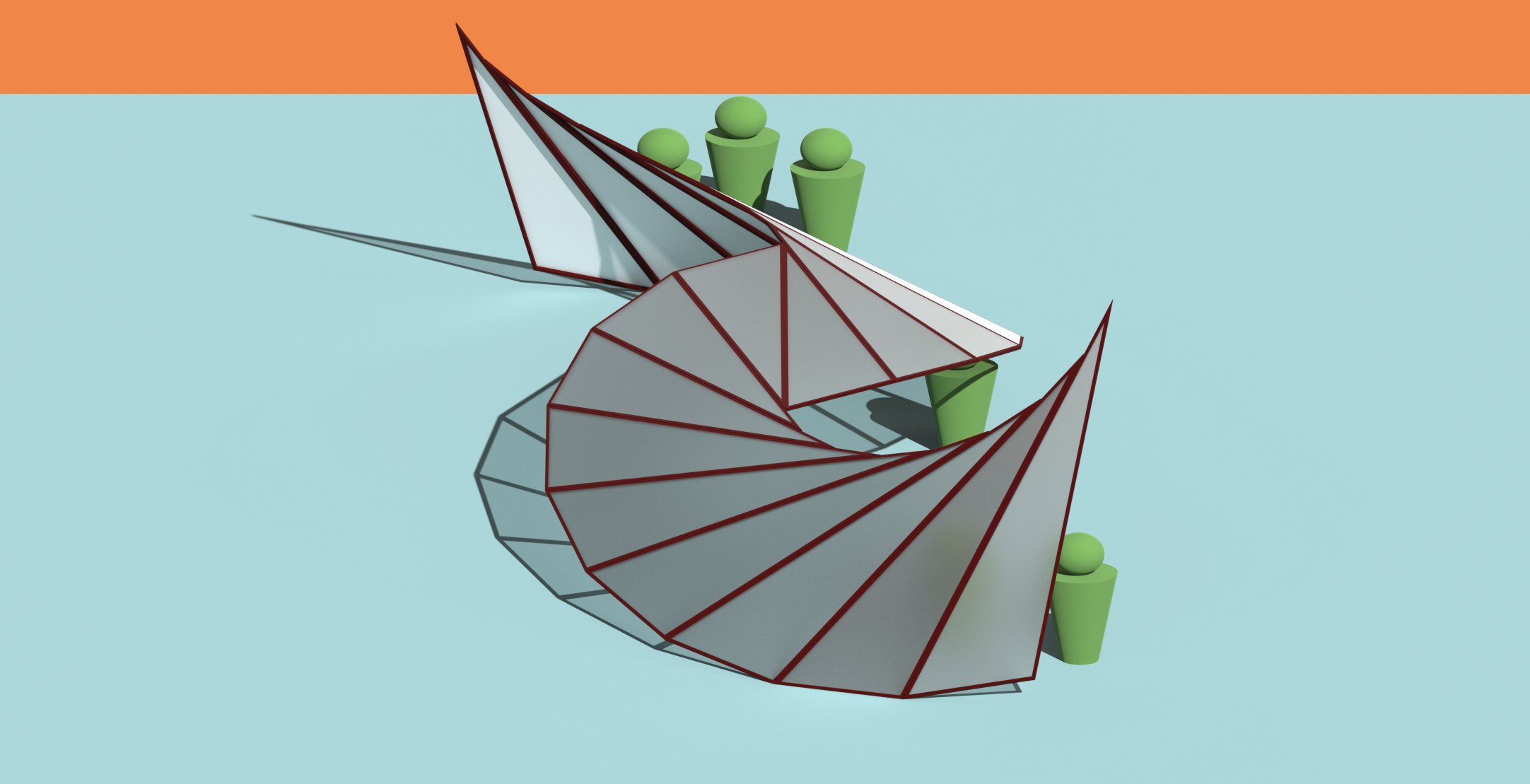

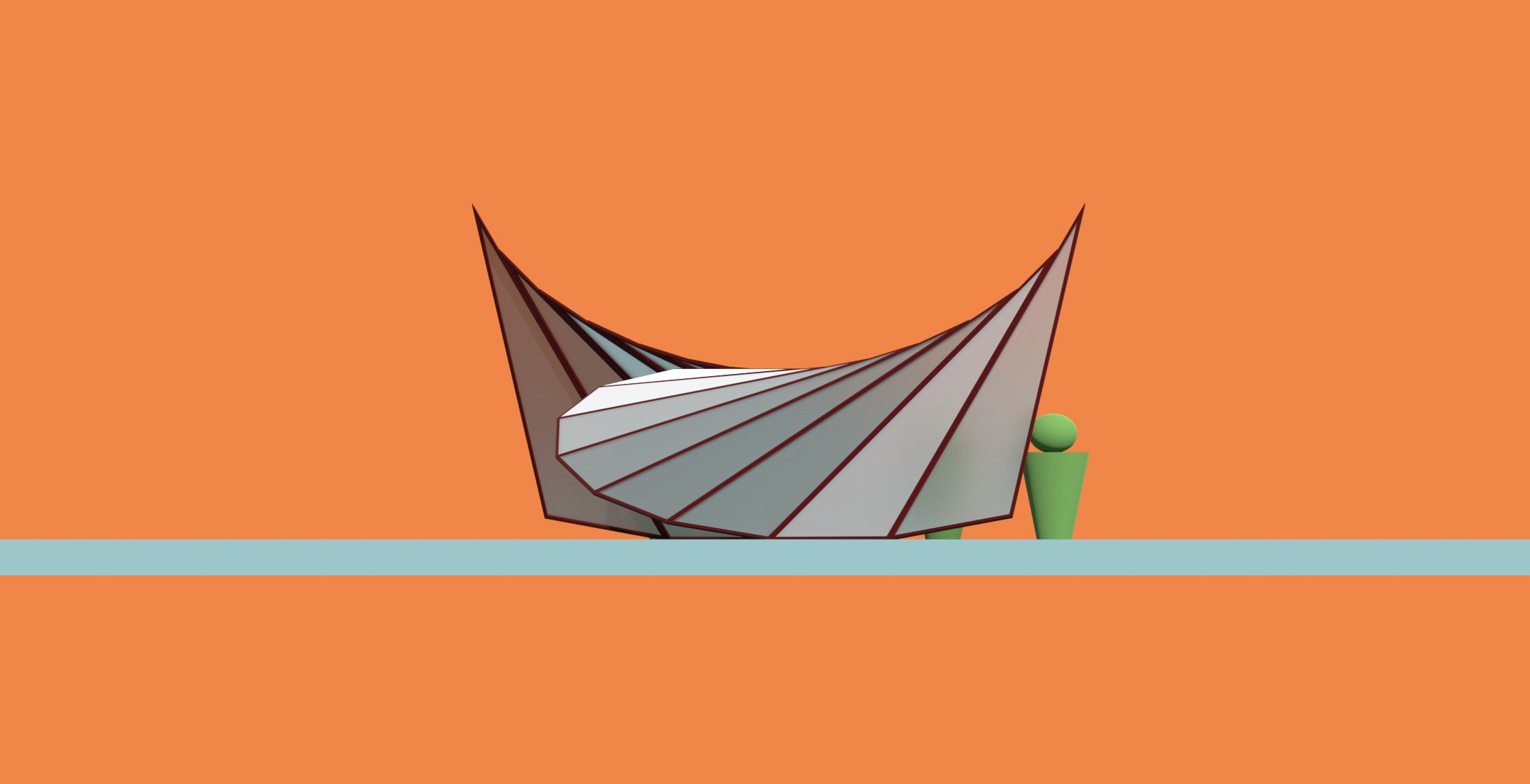

Triangle Pavilion by Garrett Harder
UNM Spring 2023 Instructor Karen King